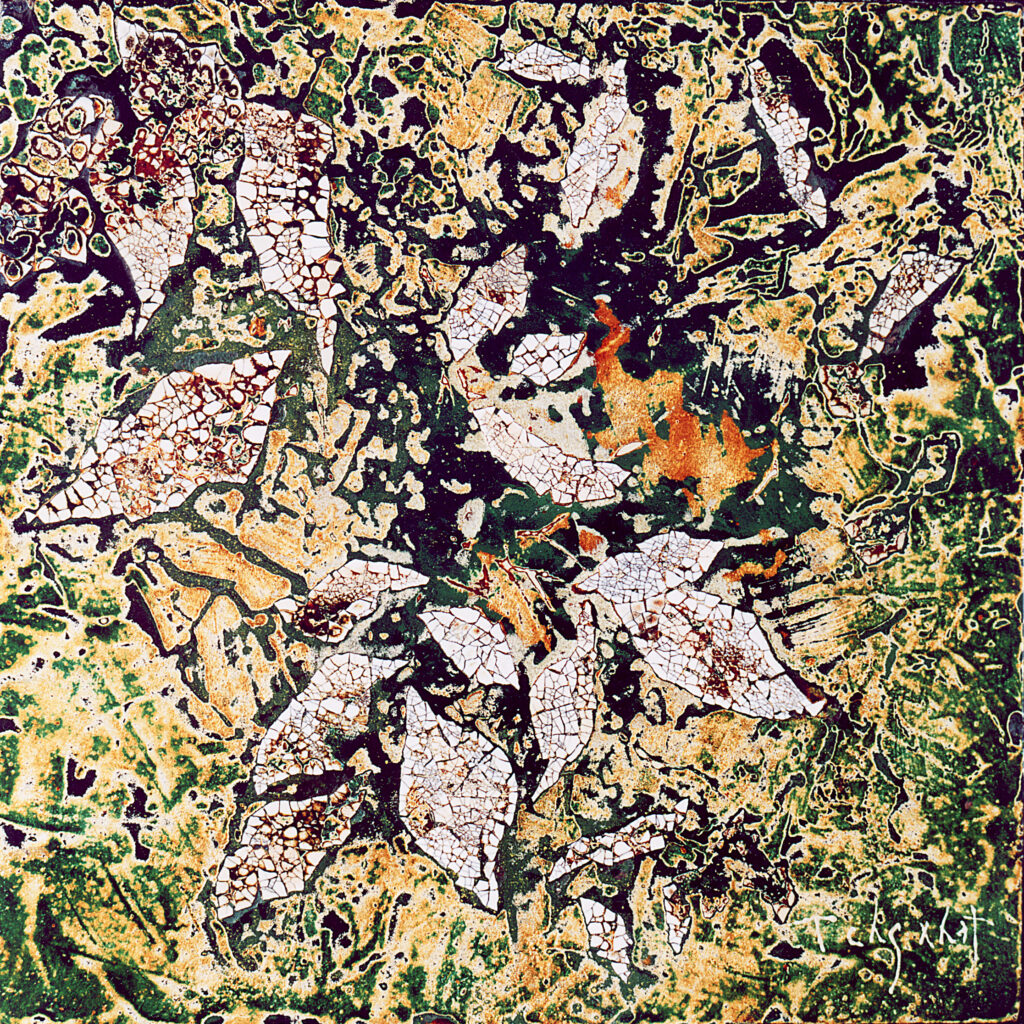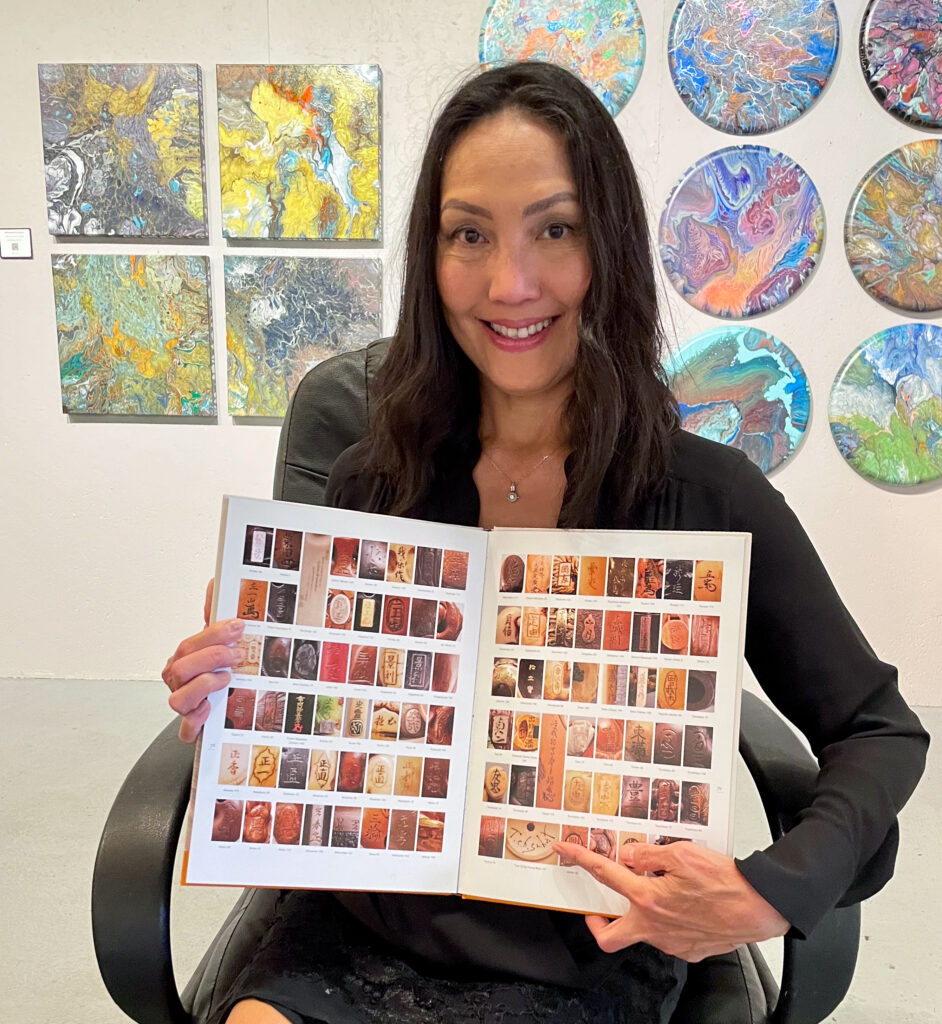Nhat Tran guesses there are fewer than 10 artists in the United States making works in Urushi, a 6,000-year-old traditional Japanese art form of using lacquer. Born in Vietnam and living in Indianapolis, Indiana, she is among that celebrated few. “It’s not well-known especially in the US. It’s really rare, so it’s an important mission for me to introduce it to people,” she says.
Urushi is named after the Asian tree species, where the sap for the lacquer is derived. For millennia in Japan, it’s been used on an array of utilitarian and decorative objects like furniture, food bowls, Buddhist sculptures, and more because it’s water-tight, lightweight, insulates, and is durable lasting hundreds of years. Tran explains of the dark, translucent material, “the Japanese (historically) will put it on wood to make it shiny, protect it, make it more beautiful.”
An artist her whole life, Tran’s curiosity with Urushi became her calling about 25 years ago when she received grants from the Indianapolis Arts Council to study in Japan with master artists. “I have tried many things. Urushi is most close to who I am,” she explains of her immersion into the art form.

Adhering to refined, time-honored methods, she creates abstract sculptural and 2D pieces reflecting 21st century aesthetics. Of her approach she says, “I can never follow instruction, so I create my own to be suitable for my personality.” She continues, “This gives me joy. I like the spontaneity and discovery of the process.”
Patience Drives the Process
That process is laborious. Fifteen to 40 layers of lacquer compose a single artwork resulting in tight formations of electric, pulsating surfaces rich with depth and vibrant colors. Even still, they are calm, peaceful, enrapturing visual meditations. One layer can take weeks to set, with a piece taking months to over a year to complete. Within those layers, she incorporates traditional materials utilized for hundreds of years: eggshells, metallic powders, and plant fibers.
“My technique is to mix those with color pigment…layers, layers, and layers,” she says of creating luxuriously dense surfaces. “Then I sand it out, see where I will go, how a pattern emerges. I never know what the result will be.” Layers are applied with special brushes specific for Urushi, of which she has a vast amount.
After each is applied, the piece goes into a humidity and temperature-controlled chamber called a muro. The unique challenge to a Urushi artist in Indianapolis is the dramatically fluctuating seasonal weather making the hardening process unpredictable. It necessitates adaptation, but it’s part of the natural evolution distinguishing Tran’s practice as her own—modern, yet ancient all at once. It’s part of her genius.
For the Love of Lacquer
Lacquer is a tedious, expensive art form. A Urushi tree must be at least 10 years old before sap can be extracted. “It’s why it’s expensive,” Tran explains. “Buying sap is not simple. You have to get the good stuff to do this work,” she stresses. “Everyone purifies lacquer differently, so quality varies greatly. It’s expensive and not created equal.” For example, she says, “Vietnamese lacquer is flammable.” Also, sap can irritate skin as Urushi’s American cousin is poison ivy.
NHAT TRAN, ARTIST“I can never follow instruction, so I create my own to be suitable for my personality. This gives me joy. I like the spontaneity and discovery of the process.”
Masterful at her uncommon art, Tran laments, “My work poses some difficulty. People don’t know what Urushi is, so they aren’t willing to buy. Exposure is limited. Then, the sap is so ridiculously expensive.”
Niche Urushi collectors aren’t out there and Tran isn’t commercially successful, but that’s not her desire.
“I really have simple, modest goals,” she says. “To see people smile and enjoy my artwork is my deepest reward. To have a chance to promote Urushi,” and, she muses, “To be able to pay my art expense bill.”



Success has been rewarded through great recognition. Her work is collected by museums including the Smithsonian. In the 2002 international touring exhibition, True Colors: Meditations on the American Spirit, her work hung alongside American greats, Rauschenberg, Lichtenstein, and Wyeth.
In 2004, the Indianapolis International Airport commissioned a large Urushi mural from her which prominently hangs in the departures terminal. Notably, Tran says it’s the only Urushi public art piece in the US. “They took a risk. It’s a huge honor. I give them credit for promoting something you don’t see anywhere,” she says.
Urushi is Tran’s destiny. “My artwork never seeks to convey a specific moral, social or political message,” she says. “It’s sincere—sharing my emotions, feelings, experience, and progress as a being.”
